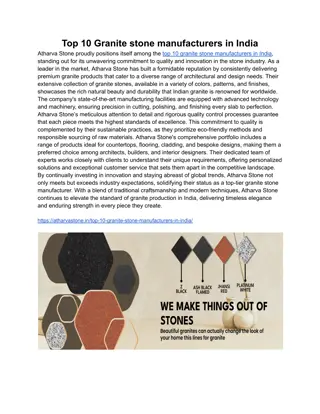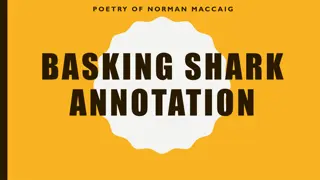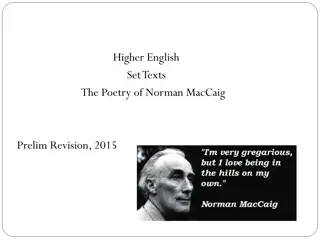Architecture and Stone Stability in Norman Sicily
"Norman Sicily's diverse architecture, influenced by various cultures, showcases a blend of Roman, Muslim, and Byzantine styles. The Cultural Stone Stability Index is crucial in assessing and preserving these structures to safeguard their heritage. Explore the CSSI activity and learn about evaluating stone stability in historical buildings."
Download Presentation

Please find below an Image/Link to download the presentation.
The content on the website is provided AS IS for your information and personal use only. It may not be sold, licensed, or shared on other websites without obtaining consent from the author.If you encounter any issues during the download, it is possible that the publisher has removed the file from their server.
You are allowed to download the files provided on this website for personal or commercial use, subject to the condition that they are used lawfully. All files are the property of their respective owners.
The content on the website is provided AS IS for your information and personal use only. It may not be sold, licensed, or shared on other websites without obtaining consent from the author.
E N D
Presentation Transcript
Architecture and Stone Stability in Norman Sicily Please click the link below to fill out a Prior Knowledge Assessment. Click here.
Norman Sicily Architecture Sicily s geographical location impacts its culture. Sitting in the middle of the Mediterranean Sea, the island holds people of many different backgrounds, with the most popular ones being Muslims and Byzantines. This impacts the architecture of the Norman Sicilians by being diverse to include all the cultures within the island. This diversity is best seen in the Cappella Palatina located in Palermo. The building contains elements of Roman style as well as Muslim and Byzantine
The Cultural Stone Stability Index This index is used to measure natural and cultural stone. The CSSI can be used to measure bridges, statues, arches, and buildings. Practitioners will use the index to assess the rock decay and give it a final score. The final score will be used to determine the structure s stability. Assessing these structures matters in order to preserve the heritage of the cultures to which the structures belong to. Using the CSSI can also determine the danger risks of the stone structure. If left unchecked, the structure could collapse.
CSSI Activity Some of the buildings of the Norman Sicilians are still around today. Activity: Assess the image on the next slide. Use the scoring sheet through the provided link to complete the assessment. Scoring sheet: http://normansicily.org/pdfs/cultural_stone_stability_index.pdf
Discussion on CSSI What physical observations can you make about the structure? What overall score did you give it? Why? End of lesson question: (Make a copy and share it) Click here
References CSSI information source: SHR Alliance. CSSI: Stone Heritage Research Alliance LLC. StoneHeritage, 2019, https://www.shralliance.com/cssi. Norman Sicily architecture and Cappella Palatine image source: Cotugno, Emily. The World the Normans Made VI. Art and Architecture. The Norman Sicily Project, 1 Sept. 2021, http://normansicily.org/en/resources/learn/group_four/.























